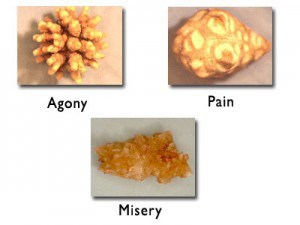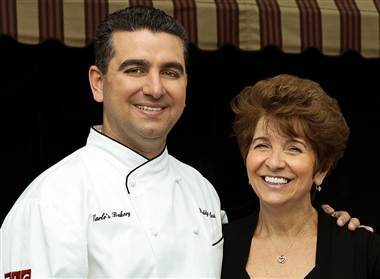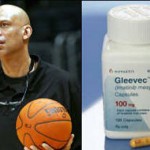Winner Phillip Phillips Had 8 Medical Procedures During Idol Competition
We all know that American Idol can be a grueling experience for its contestants. But imagine undergoing eight surgical procedures over the course of it…
We were aware that Season 11 winner Phillip Phillips had been suffering from kidney stones, but now Phillip’s father revealed that the 21-year-old former pawn shop worker has undergone 8 surgical procedures to remove stones since becoming a contestant on the show.
According to his dad, Phillip Phillips, Sr.:
He’s been doing [well], but it’s just grueling hours and it’s just amazing what he’s done through the journey. Eight operations since we started American Idol … He’s hitting 50 percent, but he’s still up there swinging away.
Now that the competition is over, Phillips will undergo one additional procedure to “reconstruct his kidney.” His recovery time is expected to be 2 to 4 weeks, and he should be ready to go when the American Idol Top Ten begin their Idols Live tour.
Here’s how things went down last night:
How are kidney stones treated?
 Fortunately, surgery is not usually necessary. Most kidney stones can pass through the urinary system with plenty of water-2 to 3 quarts a day-to help move the stone along. Often, the patient can stay home during this process, drinking fluids and taking pain medication as needed.
Fortunately, surgery is not usually necessary. Most kidney stones can pass through the urinary system with plenty of water-2 to 3 quarts a day-to help move the stone along. Often, the patient can stay home during this process, drinking fluids and taking pain medication as needed.
The doctor usually asks the patient to save the passed stone(s) for testing. It can be caught in a cup or tea strainer used only for this purpose.
Lifestyle Changes
A simple and most important lifestyle change to prevent stones is to drink more liquids- water is best. Someone who tends to form stones should try to drink enough liquids throughout the day to produce at least 2 quarts of urine in every day.
In the past, people who form calcium stones were told to avoid dairy products and other foods with high calcium content. But recent studies have shown that foods high in calcium, including dairy products, may help prevent calcium stones. This is not true for taking calcium in pill form, which can increase the risk of developing stones.
Patients may be told to avoid food with added vitamin D and certain types of antacids that have a calcium base. Someone who has highly acidic urine may need to eat less meat, fish, and poultry. These foods increase the amount of acid in the urine.
Medical Therapy
A doctor may prescribe certain medications to help prevent calcium and uric acid stones. These medicines control the amount of acid or alkali in the urine, key factors in stone formation. The medicine allopurinol may also be useful in some cases.
In order to control high levels of calcium in the urine and prevent calcium stone formation, doctors may prescribe certain diuretics, such as hydrochlorothiazide. These medicines decrease the amount of calcium released by the kidneys into the urine by promoting calcium retention in bone. They work best when sodium intake is low.
Surgical Treatment
Surgery may be needed to remove a kidney stone if it
- does not pass after a reasonable period of time and causes constant pain
- is too large to pass on its own or is caught in a difficult place
- blocks the flow of urine
- causes an ongoing urinary tract infection
- damages kidney tissue or causes constant bleeding
- has grown larger, as seen on follow-up x rays
Until 20 years ago, open surgery was necessary to remove a stone. The surgery required a recovery time of 4 to 6 weeks. Today, treatment for these stones is greatly improved, and many options do not require major open surgery and can be performed in an outpatient setting.
Extracorporeal Shock Wave Lithotripsy
Extracorporeal shock wave lithotripsy (ESWL) is the most frequently used procedure for the treatment of kidney stones.
In ESWL, shock waves that are created outside the body travel through the skin and body tissues until they hit the denser stones. The stones break down into small particles and are easily passed through the urinary tract in the urine.
Several types of ESWL devices exist. Most devices use either x rays or ultrasound to help the surgeon pinpoint the stone during treatment. For most types of ESWL procedures, anesthesia is needed.
In many cases, ESWL may be done on an outpatient basis. Recovery time is relatively short, and most people can resume normal activities in a few days.
Complications may occur with ESWL. Some patients have blood in their urine for a few days after treatment. Bruising and minor discomfort in the back or abdomen from the shock waves can occur. To reduce the risk of complications, doctors usually tell patients to avoid taking aspirin and other medicines that affect blood clotting for several weeks before treatment.
Sometimes, the shattered stone particles cause minor blockage as they pass through the urinary tract and cause discomfort. In some cases, the doctor will insert a small tube called a stent through the bladder into the ureter to help the fragments pass. Sometimes the stone is not completely shattered with one treatment, and additional treatments may be needed.
Percutaneous Nephrolithotomy
Percutaneous nephrolithotomy
Sometimes a procedure called percutaneous nephrolithotomy is recommended to remove a stone. This treatment is often used when the stone is quite large or in a location that does not allow effective use of ESWL.
In this procedure, the surgeon makes a tiny incision in the back and creates a tunnel directly into the kidney.
Using an instrument called a nephroscope, the surgeon locates and removes the stone. For large stones, an energy probe which uses ultrasonic or electrohydraulic energy -may be needed to break the stone into small pieces.
Often, patients stay in the hospital for several days and may have a small tube called a nephrostomy tube left in the kidney during the healing process.
One advantage of percutaneous nephrolithotomy is that the surgeon can remove some of the stone fragments directly instead of relying solely on their natural passage from the kidney.
Ureteroscopic stone removal
Ureteroscopic Stone Removal
Although some stones in the ureters can be treated with ESWL, ureteroscopy may be needed for mid- and lower-ureter stones.
No incision is made in this procedure. Instead, the surgeon passes a small fiberoptic instrument called a ureteroscope through the urethra and bladder into the ureter.
The surgeon then locates the stone and either removes it with a cage-like device or shatters it with a special instrument that produces a form of shock wave.
A small tube or stent may be left in the ureter for a few days to help urine flow.
Source: National Kidney and Urologic Diseases Information Clearinghouse (NKUDIC)
As Philip’s father said of his fans:
They’ve just seen a glimpse of what Phillip can do. We can’t wait to get him well and 100 percent and really see how he can perform.
Congratulations to Philip, and best wishes for a speedy recovery!



























1 Comment